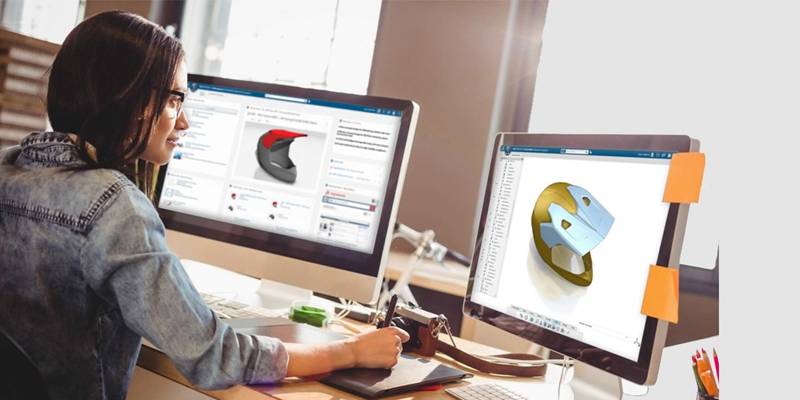- July 15, 2022
CAD is a term that stands for Computer-Aided Design. It is the process of using computer software to create three-dimensional models of proposed products. This type of software is used by many industries in order to create drafts and models. It can be used to design both two-dimensional drawings and three-dimensional models with precise measurements.
If you are reading this article, probably you are seeking to know the benefits of CAD over manual hand drawing and/or its importance in rapid prototyping and computer-aided manufacturing. It is important to realize the crucial role of CAD in design and how it is simplifying the product development workflow, especially in this era, in which remote working is becoming the new normal.
What is Computer-aided design Design (CAD)?
The origin of computer-aided design software trace back to 1963, when Ivan Sutherland developed Sketchpad and Dr. Patrick J. Hanratty introduced Automated Drafting and Machining (ADAM) in 1971.
Since then, computer-aided engineering and design software has come a long way and become more advanced as computer system improves by introducing an automated set of features and design tools making the design workflow easy and pleasant. Prior to the development of CAD, designers use pencils, rulers, compasses, drawing boards, set squares, etc. to create 2D drawings.
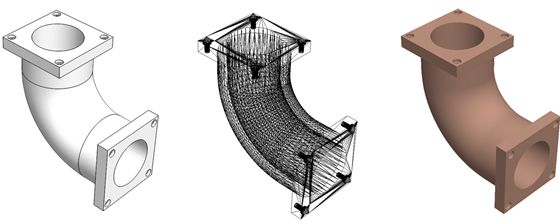
CAD is an abbreviation standing for Computer-Aided Design, which is the use of computer software for 2D and 3D modeling of products and structures in engineering, architecture, and industrial product design. It is more than a replacement for paper and pencil sketching as it has brought a whole new level of possibilities for engineers, designers, technicians, and architects.
What Advantages Does CAD Have Over Manual Drafting?
CAD provides a number of advantages over manual drawings that make it an essential tool in the design market today. These advantages help the contemporary engineer or product designer in a number of ways.
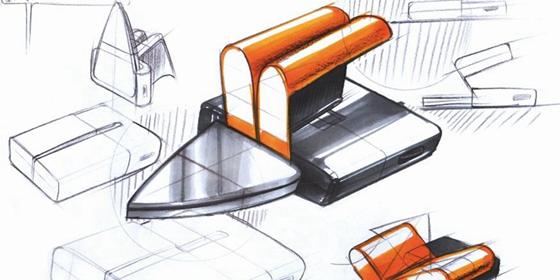
1. Productivity
CAD programs are continually evolving by adding various tools and features that boost the productivity of the designing process. These tools help cut the time of product development which in turn reduces production costs and reduces error by leaving fewer rooms for mistakes which also improves the quality of the product.
With manual hand drawing, if changes were required, sketches should be thrown away and started entirely from scratch. Digital drawings can be edited far easily using a CAD design program and an infinite number of modified variations can be made without having to redraw them from the beginning. Different parts of a single model can be made drawn separately by different designers and get assembled in CAD.
And, almost all CAD systems have a set of standard components (for example fasteners like bolts, screws, nuts, etc.) from which the designers can pick their suitable size and assemble it. 2D drawings, sectional views, detailed drawings, and auxiliary views can be generated from 3D models in the preferred standard convention.
2. Accuracy
Manual drafting is not competent with CAD drafting in creating precise technical drawings. CAD programs have features and tools that are developed as per design and drawing conventions and standards which helps designers reduce error percentages. And, complex features of design which will be extremely difficult with a manual drawing can be made far easier in CAD.
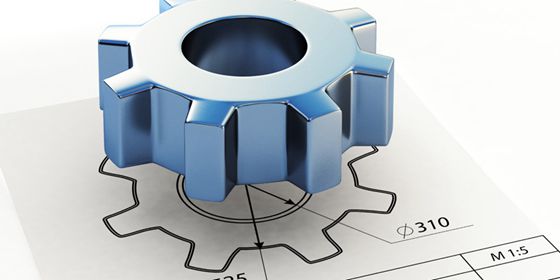
3. Legibility
Manual drawings may get unclear sometimes which will not be the case in CAD drawings. Even if the model is highly complex, having a lot of parts and features, CAD programs have to hide and show tools to eliminate temporarily unimportant parts and focus on the specific detail of the rest which is not totally possible with paper and pencil drawing.
Further, the availability of 3D isometric and section view in CAD designs enhances visibility and understanding as they make turning and slicing possible respectively which is again very time-consuming work in manual designing.
4. Presentation
It is easy to influence your customer and fellow workers by presenting your design with virtual models without having to manufacture a prototype as you can simulate movements, show internal parts by sectioning and show it from different sides. You can even communicate the function and aesthetics of your design to a layman with no engineering background easily with a rendered 3D model in which different parts have different colors.
5. Subsequent Operations
Other than creating drawings, CAD software has the capability of engineering computation and analysis with mathematical equations. For instance, the product designer can calculate geometrical properties (area, volume, the center of gravity, etc.) and mass properties (mass, density) of the model usually with a single click in CAD programs.
Further, a lot of CAD programs support motion study and simulation, parametric modeling, structural, thermal, fluid, etc. finite element analysis which help designers analyze and enhance their model strength, functionality, and other properties prior to manufacturing.
Sharing and Collaboration
Another huge advantage of CAD drawing over manual drawing is that one designer can make a model and send it to another even if they are on the opposite side of the world. The receiver can view the model history, see exactly how it is designed, and edit it. This is too difficult with manual drawing.
Most CAD systems are continually making collaboration easy for remote working by adopting cloud sharing and automated data management tools that enable engineers to edit the same design simultaneously in real time from anywhere and on any device.
6. Documentation
After modeling, linear and angular dimensions and measurements of parts, assemblies and sub-assemblies, and bills of materials are digitally recorded and saved for future reference and use. In the case of traditional manual drawing, the sketch paper should be shelved which is prone to damage and deterioration.
Industry Applications of CAD
Nowadays, commercial CAD software packages are a must to have design tool in factories, design offices, and academics as it saves time, and ensure good collaboration and seamless integration with other computer-aided production systems like CAM.
A lot of industries; including factories, architecture, product design offices, etc. utilize CAD as it optimizes the design workflow and delivery of the final product. CAD enhances collaboration within the firm and across industries and concurrent engineering works.
CAD and CAM (Computer Aided Manufacturing)
In addition to creating models just as imagined, CAD is used in tandem with digitized manufacturing in a process called CAD/CAM. When combined with CAM, CAD assists in the entire phases of producing a product, including process and production planning, scheduling, production management, and quality control.
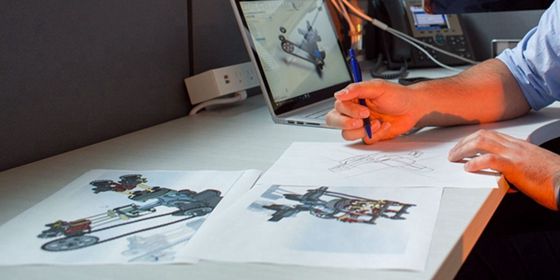
In CAD/CAM, the design and production processes are blended together as the electronic output file of CAD software is used in part production processes. This allows changes to be made at any part of the workflow and reduces the time to go from raw materials to finished products.
CAD software makes it possible to perform structural, thermal, vibration, motion steady-state, and transient simulations to investigate and diagnose problems. This helps to make small changes by iterating the design parameters and seeing improvements.
CAD in Rapid Prototyping and Manufacturing
In rapid prototyping, designers can bring their imagination and innovative ideas to physical life right the first time without having to make multiple iterations. This gives an incredible opportunity for communicating your ideas with colleagues, customers, or even end-users visually and with hands-on experience and getting feedback and design concept proof.
Rapid prototyping minimizes time and waste, and promotes the creative design process, especially for companies offering custom and complex products. Almost all rapid prototyping methods rely on Computer-Aided Design to create prototypes, and hence we can say CAD is the heart of rapid prototyping. So, let’s briefly look at how CAD automates both machining and additive manufacturing rapid prototyping techniques.
1. CAD with CNC Machining
CNC prototyping comprising precision multi-axis milling, turning, EDM, wire EDM, and grinding is a subtractive process in which the prototype is made by removing a bulk of the material. The broad range of engineering materials that are difficult to shape with other prototyping methods can be made with CNC machining. Most CNC machines work with G-codes which dictate the cutting tool direction, cutting speed, feed rate, and depth of cut. And G-codes can be obtained from the DXF format of CAD files.
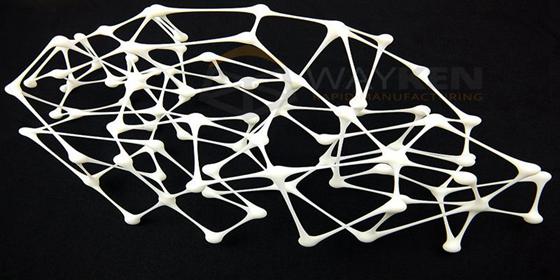
2. CAD with 3D Printing
CAD software provides users with the tools they need to create a 3D model from scratch. This model can then be processed, sliced, and sent to a 3D printer for printing. Creating a 3D model is the first step in making a physical, real-world replica of an object or concept.
With CAD software, you can export your model to a file format compatible with slicing software. This slicing software translates the model into G-code instructions that can be interpreted by a 3D printer. Once the printer has these instructions, it can create a physical replica of the original digital model.
3. CAD with Vacuum Casting
Vacuum casting uses silicone molds to make high-quality plastic and rubber components under vacuum. The master pattern used for mold making is made with a 3D CAD model and manufactured with one prototyping technique.
Conclusion
There are a number of advantages to using CAD in rapid prototyping as well. CAD software is constantly evolving and becoming more user-friendly, making it easier for those with little experience to create complex models. Additionally, CAD-created prototypes can be easily modified and tested, allowing for a more efficient design process.
Already have a CAD file and are worried about how to bring your ideas to life? WayKen is always here to help you.
We are a leading rapid prototyping manufacturer with an outstanding track record for producing high-quality prototypes and machined parts. With our years of machining experience and approaches, we can handle a variety of processes, including CNC machining service, 3d printing, injection molding, etc. So, Upload your CAD file today, and we will take your CAD blueprints and bring them to life in the best way possible.
FAQ
Which software is used for CAD?
The popular CAD software is, AutoCAD, CATIA, Fusion 360, Inventor, SolidWorks, Onshape, and Solid edges.
What are the advantages 3d over 2d cad drafting?
The 3D model has better visualization for a person with no knowledge of engineering drawing. It has more satisfaction than 2D when the designer looks at it. Of course, we can generate 2D views from 3D models
What is the limitnation of CAD?
Sometimes a designer can have a fancy imagination in mind which can be modeled in CAD but is costly for physical realization. A CAD user needs the training to use each commercial CAD programs

